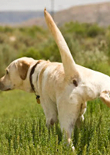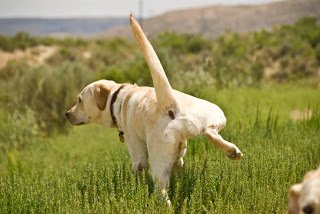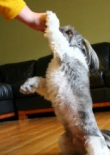
How to Train a Shih Tzu & Choose Your New Dog With Care
By Sally Gutteridge | Breeds , Posts , Training
 So you are having a new family pet and like the look of the Shih Tzu. A toy breed dog of sturdy build and cheerful nature that will meet and exceed your expectations.
So you are having a new family pet and like the look of the Shih Tzu. A toy breed dog of sturdy build and cheerful nature that will meet and exceed your expectations.
Heritage
The Shih Tzu has ancient heritage. Originating from China and Tibet he is genetically one of the older dogs that we know of. It is thought that this breed originates from a cross between the Lhasa apso and Pekinese. They are rumored to have resided with Buddhist monks.
The Shih Tzu is a loyal smaller dog with less likelihood to yap than other toy breeds. With relatively low energy levels he will be happy to accept shorter walks than many other smaller dogs. The Shih Tzu is interested in his surroundings and carries in his nature the expectation of grand treatment. Researching how to train a Shih Tzu and training him early in the dog’s life will usually mold a great family dog. This little dog, if socialized and trained properly will prove an excellent pet.
Health of the Shih Tzu
Health problems to look out for are often based around the face of the Shih Tzu. Eyelids can turn inwards causing the eyelashes to grow into the eye. This will often need an operation to rectify the problem. With extreme breeding the eyes of the Shih Tzu can be so large that the lids cannot close to moisturize the eyeballs. Another problem to be aware of is breathing difficulties if the dog has an over exaggerated snub muzzle. Breathing can be terribly labored due to the resulting blocked nostrils.
A well-bred Shih Tzu
A good breeder will be able to introduce you to the puppies and their Mother and Father. The young dogs will be growing up in a family home. They will be acclimatised to electrical appliance noises and visitors to the home. Socialization of this dog type is crucial to prevent fear based behaviors later on. Both parents of the puppies will be healthy and happy dogs. Any good breeder will want to know about you and the type of home you offer. They will give health information and education on how to train a Shih Tzu.
House training a Shih Tzu is paramount. Reward and positive reinforcement is how to train a Shih Tzu to toilet outside. It is also a good idea to introduce your dog to a cue word when toileting. This will give the dog the idea of what you want from him early on.
How to train a Shih Tzu to toilet on command
- Give your dog regular opportunity to toilet outside.
- The option to toilet can be as frequent as every hour to begin with.
- Always stay with him and watch him closely.
- Decide upon a cue word for toileting, something like “busy” will suffice.
- Each time your dog toilets outside use the cue word to associate the act with the command.
- Follow up the successful toileting experience with lots of praise and a tiny food reward or a quick play with a special toy.
- When your dog is used to the word association you can go outside and give the cue word before he toilets.
- After he has been follow the act with “good” (cue word) and reward.
The Intellectual Shih Tzu
Your Shih Tzu will need sufficient attention and training to exercise his intelligence. If he is not provided with this opportunity regularly he will most certainly get into trouble. The under stimulated Shih Tzu will become grumpy and self-absorbed. He may destroy things and guard the furniture.
Luckily despite his genetic stubborn streak the Shih Tzu loves to learn tricks and be entertained by children, remember though that young children should always be supervised with dogs. Alongside every other breed of dog reward, positive experiences and holding interest is how to train a Shih Tzu with success. This breed responds wonderfully to clicker training.


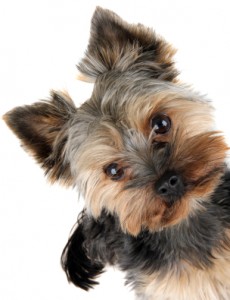 The Yorkshire terrier is a wonderful breed. Small in size and stature but large of heart and personality the Yorkie is a great little dog. There is something special about the shining eyes and button black nose of the Yorkie. When you have experienced this breed of dog for any length of time you will certainly be hooked. Many Yorkshire terrier owners have multiple dogs and consistently have at least one Yorkie in the household.
The Yorkshire terrier is a wonderful breed. Small in size and stature but large of heart and personality the Yorkie is a great little dog. There is something special about the shining eyes and button black nose of the Yorkie. When you have experienced this breed of dog for any length of time you will certainly be hooked. Many Yorkshire terrier owners have multiple dogs and consistently have at least one Yorkie in the household.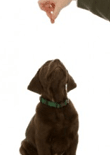
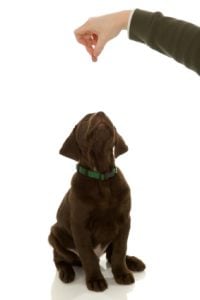 The Labrador retriever is a simple dog. He asks very few questions and has much love to share around. He doesn’t have the high and often complicated intelligence of other working dog breeds. If, however, any dog breed had the capability for emotional intelligence the Labrador would be it.
The Labrador retriever is a simple dog. He asks very few questions and has much love to share around. He doesn’t have the high and often complicated intelligence of other working dog breeds. If, however, any dog breed had the capability for emotional intelligence the Labrador would be it.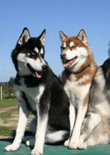
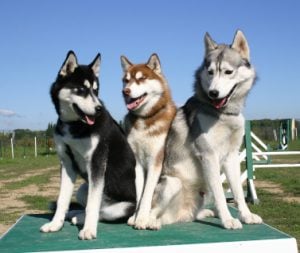 Beauty and brains unite in the Siberian husky. Bred to pull sleds for many miles in arctic conditions, this breed of dog is becoming increasingly popular as a family pet. With an appearance similar to that of the white wolf and great strength of body and mind the husky is a canine to be admired.
Beauty and brains unite in the Siberian husky. Bred to pull sleds for many miles in arctic conditions, this breed of dog is becoming increasingly popular as a family pet. With an appearance similar to that of the white wolf and great strength of body and mind the husky is a canine to be admired.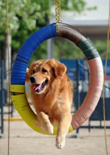
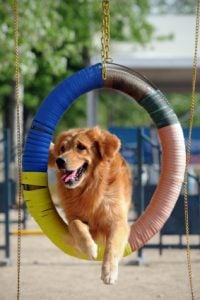 The Golden Retriever.
The Golden Retriever.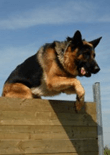
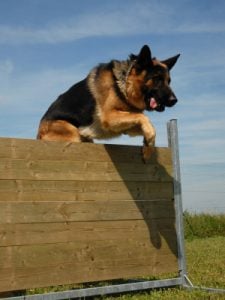 German Shepherd Dog
German Shepherd Dog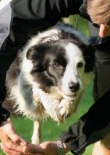
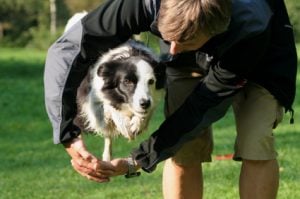 The Border collie
The Border collie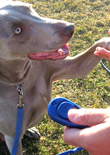
 Today, clickertraining is used as a popular, effective, and gentle training method for dogs. However, operant conditioning – the process of training any animal with a clicking mechanism – has been used as a positive reinforcement training tool since World War II by B.F. Skinner.1
Today, clickertraining is used as a popular, effective, and gentle training method for dogs. However, operant conditioning – the process of training any animal with a clicking mechanism – has been used as a positive reinforcement training tool since World War II by B.F. Skinner.1
 There are a number of different ways to approach training your puppy. If you have already tried harsher methods to manage behavior, like choke chains or shock collars, you may have seen a small degree of success. But you may have also noticed that your dog became frightened, anxious, and even angry during the training sessions.
There are a number of different ways to approach training your puppy. If you have already tried harsher methods to manage behavior, like choke chains or shock collars, you may have seen a small degree of success. But you may have also noticed that your dog became frightened, anxious, and even angry during the training sessions.